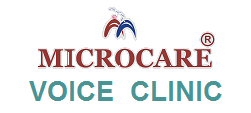Problem Voice
Voice Disorders
What is a Normal Voice?
Everyone’s voice is part of their personality and unique like finger printing. A “normal voice” is one that is pleasing to the ear, has a balance of sound through the mouth and nose, and matches a person’s size, age and gender.
Your voice shares a lot of information about you. Cry of a baby attracts attention and invites care from mother. More than words, tone of the voice expresses attitudes such as intimacy, authority, submission and dominance. Voice even without words can express emotions such as grief (weeping), frustration or anger (crying). It tells others if we are sick or feeling well, and can reveal your background – if you have an accent!
What is a Voice Disorder or a Problem Voice?
A Voice Disorder is present when the quality of someone’s voice is affected. An affected voice may
• Be hoarse, harsh or breathy
• have an improper balance of air through the mouth and nose (e.g. when you have a cold)
• be too soft, not easily heard, or so loud, it is heard on the ears
• be too high or too low in pitch
• not have any rhythm or change in intonation pattern
What Causes a Voice Disorder in Children?
- Allergies and upper respiratory disease
- The environment that a person is in, where it is very dry or they are exposed to chemicals and/or cigarette smoke
- Emotional problems or medications taken
- The way a child uses their voice: loud, yelling, screaming, using up all their air, and still talking!
- Some change in the tissues of the mouth, throat or larynx (voice box) due to the way the tissue has grown over time
When Should I Get Help?
Everyone’s voice will change if they are sick, or tired. Children’s voices tend to recover quickly. If your child’s voice remains hoarse, harsh or breathy for more than a month, contact your ENT Surgeon. Your ENT Surgeon will review your child’s situation and make recommendations.
The specialist ENT Surgeon or Ear, Nose and Throat Doctor (also called or Otolaryngologist) will listen to your child’s voice, and will look at your vocal cords with a strong light and the use of small mirrors, like the ones a dentist would use. Some ENT’s will use a laryngoscope, a camera and light in a very fine tube, often slid through the nose in order to look down the throat.
An ENT surgeon most often recommends a course of therapy with a Speech-Language Pathologist, to help children learn different talking habits. In rare situations, surgery to remove lumps, or nodules, from the vocal cords, will occur. A Speech-Language Pathologist will always have you see the ENT surgeon first; to make sure that all medical assistance has been given, before therapy begins.
People with voice disorders have very typical complaints, which include
- Hoarseness
- Scratchy voice, weak voice, breathy voice
- Difficulty with loudness, increased effort to talk
- Pain or discomfort while speaking or singing
- Change in singing voice
- Voice fatigue (worsening voice quality or discomfort with voice use)
- Changes in voice after trauma or surgery to the neck, throat, or larynx
- Change in pitch of the voice, Female voice in males (Puberphonia) or male voice, in females (Andrpohonia)
- Hyper and hyponasality (Nasal voice)
What are the causes of voice disorders?
Voice disorders can be caused by a variety of factors, including
- Excessive and improper use of the voice by voice professionals
- Bad habits such as smoking or other forms of tobacco abuse and alcohol consumption
- Allergies
- Environmental pollution
- General disorders like hyperacidity, diabetes etc.
- Other factors like infections, tumours, neck surgery and trauma
As a result of these factors, various pathological lesions and conditions may arise in the vocal cord region, thus causing a voice disorder. These can be lesions such as vocal nodules, polyps, cysts, granulomas, cancer, papilloma and such conditions as vocal fold paralysis, vocal cord oedema (swelling) and muscle tension dysphonia.
Factors such as resonance disorders also affect the quality of the voice. These include hypernasality (too much sound through the nose) and hypo nasality (too little sound through the nose). Hyper nasality is most common in children who have a cleft palate or repaired cleft palate but can have other causes as well. Hypo nasality is most often caused by a narrow nasal passage or narrowing of the area connecting the nose and the mouth.
Contact Microcare Voice Clinic for Voice Disorders Treatment in Hyderabad.
 Microcare Voice Clinic in Hyderabad
Microcare Voice Clinic in Hyderabad
